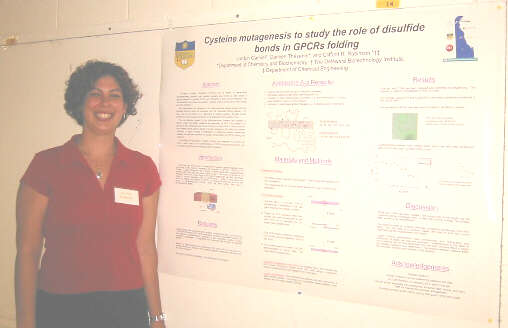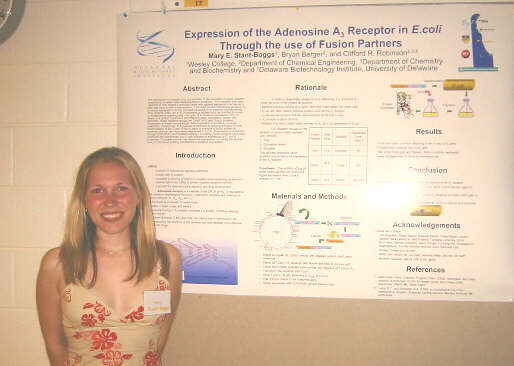Do Flavoprotein Sulfhydryl Oxidases Need Metals?
Stephen
G. Brohawn, Irena Rudik Miksa, and Colin
Thorpe
Department of Chemistry and Biochemistry
Each disulfide bond generated during the oxidative folding of secreted proteins requires removal of 2 electrons. In higher eukaryotes, sulfhydryl oxidases have been found to catalyze this process with reduction of oxygen to hydrogen peroxide. Both metal-dependent and flavin-dependent classes of these oxidases have been described. The first protein sequence of a metal-dependent enzyme, from a copper-containing skin sulfhydryl oxidase, has been recently published and is 51% identical to the sequence for a flavin-dependent sulfhydryl oxidase already studied extensively in our laboratory. Thus we were concerned that our work on the emerging flavin-dependent sulfhydryl oxidases had missed an important additional copper cofactor. The present study establishes that the best-studied flavin-dependent oxidase contains no significant copper or other metals, and that copper and zinc are inhibitors of disulfide bond formation. Studies with zinc as a model divalent metal show that it binds to CXXC centers and drastically perturbs the flow of reducing equivalents in this multi-domain enzyme. Similarly, copper binds within the active center close to the flavin prosthetic group. Our metal analyses show that the flavin-dependent oxidase is prone to bind metals and this may have misled earlier workers. Thus the evidence that the skin sulfhydryl oxidase requires copper (rather than flavin) for enzyme activity should be reexamined. (Supported by Beckman Scholars Program and NIH GM26643)

